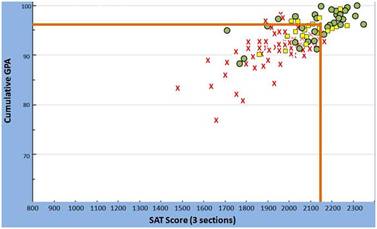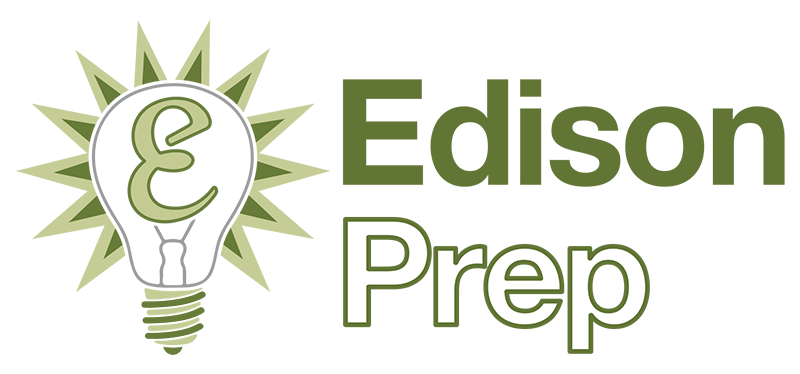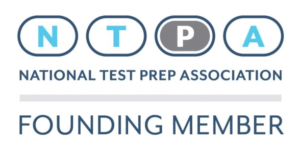10 Tips for SAT/ACT Preparation and College Admissions: Summer 2013
1. Don’t bring a knife to a gunfight. Your student should be using a TI-83 or a TI-84 calculator on the SAT and ACT, and nothing else. These calculators are very powerful and if used correctly, will allow someone to get a far higher score than he or she otherwise could. You can get one for $30-110 depending on new vs. used. If you have your pick, the TI-84 Plus Silver Edition is the gold standard.
A. The TI-30X: In the gunfight analogy, this is a butter knife. No graphing abilities renders it weak.
B. The TI-89 and TI-NSpire: The main thing that these models “inspire” are low scores. They are unwieldy and loaded down with nested menus that hinder efficiency. And they are so complex and powerful that many of these models are even illegal on the SAT and/or ACT.
More info on the TI-84 is here.2. Always sign up for the “optional” Writing section when taking the ACT. Your score is rendered null and void at many universities (including UGA) if you do not take the Writing (essay) section. Each year, we encounter a few dozen panicked seniors who got a great ACT score without the mandatory ACT Writing section. Last year, one person realized so late that he ended up having to go to his safety school for a year (one that didn’t require the essay) and is just now in the process of attempting to transfer for his sophomore year.3. Take the test at a familiar location that you’re comfortable at, and at a location that has the highest proportion of students who are familiar with the test. This minimizes disruptions during the test (e.g. the student raising his hand and saying “what’s a grid-in?”) and you’ll usually end up with more experienced proctors to boot. Your tutor can give you good ideas of places to take it at and places to avoid.4. Research which schools will “super-score” your ACT scores far in advance. As a general rule, 90%+ of schools will allow you to “superscore” your SAT (e.g. combine the best section scores from different dates), but a little less than 1/3 of schools superscore the ACT. This is a crucial strategic difference for many students, since virtually all students take the SAT or ACT 2-3 times. Knowing this ahead of time helps you plan out which month(s) you’re taking the test and ensures sufficient time before applications are due. If your schools don’t superscore the ACT and you are someone who is particularly volatile on your practice tests, the SAT can be a smarter choice if your starting SAT/ACT scores are similar.5. Read our blog post “What’s Your Number?” This blog post has gotten more views than any of our other blog posts…and for good reason! This post analyzes how many SAT questions a student is allowed to miss and still get the average SAT score at many commonly-applied-to schools. The gaps between schools are smaller than you’d think! Read the “What’s Your Number?” blog post here.
6. If your school has Naviance software, get access as early as possible and access the “admissions scattergrams.” If it doesn’t, use MyChances.net or Cappex.com for the same purpose. These three similar tools show students real data from students who were admitted, waitlisted, or denied based upon their GPA and SAT/ACT score combinations (see below graphic). Knowing these stats as early as possible gives you an easy “gut check” so that you know what stats are required to have a reasonable chance of admission.

7.
Sign up for back-to-back test dates whenever you initially sign up for the first date if you think there’s even a slim chance you’ll want to take it again.
8. Tip for Parents: Once SAT tutoring/studying begins, conduct regular kamikaze vocab quizzes at the dinner table. Students may hate us for putting this tip here, but parents are often shocked when they try this. Vocab is understandably boring, and thus students leave it for last or just simply don’t do it. One mom’s recent text to us said this: “We did a quiz at dinner tonight since he says he’s been studying a lot. He was 0 for 5. The quizzes will now continue nightly. Thanks for the heads-up.”
9. Read through Edison Prep’s older blog posts. We intentionally create blog posts less than 10 times per year to keep the quality of the blogs high and to avoid wasting your time. Not every blog post will fully apply to everyone, but most will contain at least one pearl of wisdom for everyone. Our main blog page with all of the past posts is at this link: http://edisonprep.com/pages/blog.html.
10. Last but not least, realize that the SAT/ACT score is not — and should not be — the most important factor in college admissions. Your 4-year GPA and whether you took rigorous classes (e.g. AP, IB) is the single most important factor. SAT/ACT scores are the 2nd most important factor. Each year, we have at least 6-8 times more people who don’t get into School X because of a really rocky GPA freshman and sophomore year that tanked the cumulative GPA than because of a bad SAT/ACT score.
If you have questions, we’re happy to help! Please contact us at edison@edisonprep.com!







